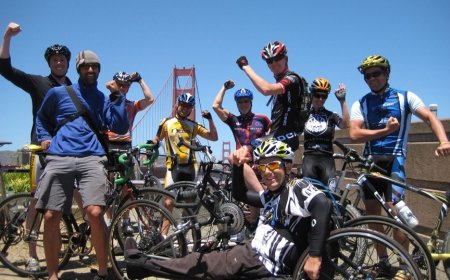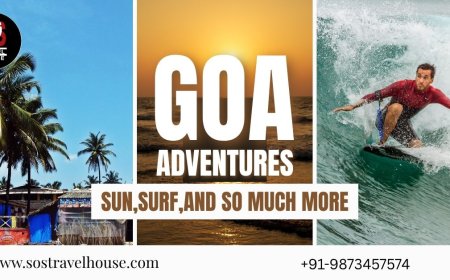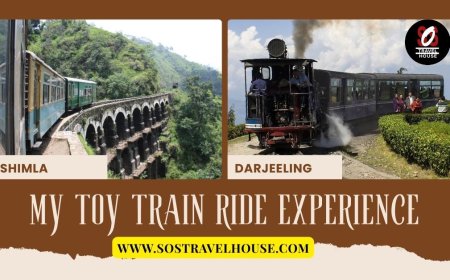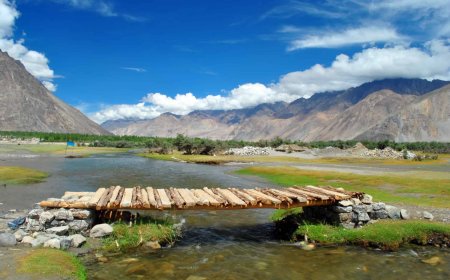How to Choose Between Group vs. Private Everest Base Camp Treks
Everest Base Camp Trek: Walk amidst giants, meet Sherpa communities, and embrace the ultimate trekking adventure in Nepal.

Choosing between a group trek and a privatetrek to Everest Base Camp comes down to what you prefer, your budget, and your travel style. Group treks are great for those who want to save some cash, meet new people, and follow a set plan with experienced guides. These trips have fixed dates and let you bond with other trekkers. Plus, they usually handle permits, places to stay, food, and porters, making things easier for first-time trekkers. The downside is that they stick to a certain pace and dont allow much flexibility.
On the other hand, private treks give you a more custom experience. You can change your itinerary, decide how long to rest, set your own pace, and choose where you want to stay. This option is perfect for solo travelers, couples, or families wanting a more personal journey. Private treks mean you get more attention from guides and enjoy more privacy, but it does cost more. You can travel at your speed and focus on what interests you most, like photography or local culture.
Think about what makes you comfortable, how much you want to spend, and how much flexibility you need. Group treks are budget-friendly and fun, while private treks let you personalize your adventure. Either way, youll get to experience the beautiful Himalayan scenery, visit Sherpa villages, and reach Everest Base Campjust in different ways. No matter which route you choose, make sure youre ready physically and mentally for an unforgettable trek in the Himalayas.
Group Trek Overview: What to Expect from a Standard Package
Group treks to Everest Base Camp come with a set plan, experienced guides, and shared logistics, making them great for those on a budget. These packages usually cover things like permits, domestic flights, meals, places to stay, and porters. Groups typically have 6 to 16 people, giving you a chance to meet other adventurers from all over. While schedules are fixed, they allow for proper adjustment to altitude and include rest days. Guides keep the group safe, manage the logistics, and help with altitude issues. Though theyre less flexible than private treks, group trips make planning easier and help build a fun community along the way.
Private Trekking: Benefits of a Personalized Experience
Private treks to Everest Base Camp offer the most flexibility and personalization. You get to set your own pace, customize your plans, and pick where you stay, which is perfect for solo travelers, couples, or small groups wanting a unique experience. With private guides, you get more attention and support, plus exclusive porter service. This option is ideal for those who want privacy or have specific interests like photography or learning about local culture. While private treks tend to be pricier, they provide more comfort and adaptability. Theyre great for people with special schedules or needs who want a deeper connection to the Himalayas.
Comparing Costs: Group vs. Private Treks to Everest Base Camp
Cost is a big difference between group and private trekkings to Everest Base Camp. Group treks are usually cheaper since costs are shared for guides, porters, and other logistics. Prices typically fall between $1,200 and $2,000 per person, depending on what's included and who you book with. Private treks can run over $3,000, especially for solo travelers. The higher price reflects personalized services, more control over your schedule, and often better accommodations or meals. Think about whether getting more flexibility and comfort is worth the extra cash, or if a group trek fits your needs and budget better.
Flexibility and Customization Differences Explained
Private treks offer a ton of flexibility. You can adjust your pace, daily plans, and even change routes based on how you're feeling or what you're interested in. You choose when to start your day, where to take longer breaks, and how long to spend at beautiful spots. On the other hand, group treks follow a set plan with little room for change to keep everyone on track. This affects the overall experienceprivate treks are better for those who want more control, while group treks work well for people who like a structured plan. The right choice depends on how much control and personalization you want on your trek.
Meeting Fellow Trekkers: Social Aspects of Group Travel
One major perk of group treks to Everest Base Camp is the chance to meet new people. Youll connect with travelers from all over, swap stories, and build friendships on the trail. Trekking through the Himalayas together often creates strong bonds. The group atmosphere can help lift spirits on tough days and offers safety in numbers. Having companions can also take your mind off the fatigue and altitude sickness. For solo travelers or those just starting, group treks provide support and community. If building connections and friendships matter to you, a group trek might be the way to go.
Attention and Support: Private vs. Group Experience
When you go on a trek, the kind of support you get can be different if you choose private versus group options. With a private trek, your guides attention is all on you (or your group). You get personalized advice, close check-ins on how youre handling the altitude, and deeper insights into the area. On a group trek, one guide looks after many trekkers, so you might not get as much individual attention. Even though group guides are skilled, they can't focus on you as much. If you have specific needs, like needing a slower pace or dealing with health issues, having a private guide can be really helpful. Think about how much help youll want when deciding which type is right for you.
Itinerary Control: How Much Flexibility Do You Want?
A big reason people go for a private trek to Everest Base Camp is the freedom to control their schedule. You can change hiking times, take extra rest days, or explore different routes based on how youre feeling and what you want to see. This is super useful if youre sensitive to altitude, want to check out lesser-known spots, or like taking photos. Group treks usually stick to a set plan meant for the average trekker, with little wiggle room. If you want the chance to linger at beautiful locations, acclimate at your own pace, or change things up as you go, a private trek is the way to go.
Accommodations and Food: Custom vs. Standard Choices
Where you stay and eat can be quite different between private and group treks. Group treks often mean basic tea house stays and fixed meal plans at certain lodges. While these are comfy and authentic, the options can be limited. Private treks usually let you upgrade your accommodations, pick your favorite lodges, and sometimes order customized meals. If you have dietary needs or care about your comfort, going private gives you better control over where you stay and what you eat. Group treks are simpler and easier to handle, which many find is just fine for the experience.
Safety and Health on the Trail
Safety is really important during the Everest Base Camp trek, especially with altitude and changing weather. In group treks, guides keep an eye on the whole group and carry first-aid kits and oxygen. But in emergencies, they might not be able to focus on everyone at once. With private treks, guides can pay closer attention to your health, reacting quickly if there are signs of altitude sickness or tiredness. They can adjust the pace or schedule based on how you feel at that moment. If safety is a top concern for you or if you have health issues, the extra oversight from a private trek can give you peace of mind.
Choosing Whats Right for You
In the end, picking between a group or a private trek to Everest Base Camp comes down to your travel style, budget, and whats important to you. If you want flexibility, privacy, and direct support, then go for a private trek. If you're more into a social vibe and a budget-friendly option where everything is set up for you, a group trek might be better. Think about how fit you are, what makes you comfortable, and how much freedom you want while trekking. Both ways will get you to amazing landscapes, Sherpa culture, and adventureit just depends on how you want to experience it.
Which is Harder, Everest Base Camp or Annapurna Base Camp?
Most people think the Everest Base Camp (EBC) trek is tougher than the Annapurna Base Camp (ABC) trek. EBC climbs to 5,364 meters (17,598 feet), way higher than ABC's 4,130 meters (13,550 feet). The EBC trek usually takes about 12 to 14 days and includes rough trails and steep climbs, which can make altitude sickness more likely. In comparison, ABC is a bit shorter (around 7 to 10 days), with more gradual climbs and easier paths lined with trees. The weather around Everest is also tougher. While both treks are beautiful, EBC is more demanding in terms of fitness and getting used to the altitude. If you're new to trekking or short on time, ABC might be better for you, whereas EBC is fit for those looking for a bigger challenge.
How Do Most People Get to Everest Base Camp?
Most trekkers start their Everest Base Camp adventure by flying from Kathmandu to Lukla, a small airport that serves as the main point of entry to the Khumbu area. This flight takes about 30 to 40 minutes and offers amazing views of the Himalayas. Once in Lukla, trekkers follow a clear path through villages like Namche Bazaar, Tengboche, Dingboche, and Gorak Shep, until they finally reach Everest Base Camp. The whole round trip takes about 12 to 14 days, including time to adjust to the altitude. Some choose to fly to Phaplu or drive to Jiri and then trek longer to link up with the main EBC trail, but the Lukla route is the most popular because it's easier to access.
How to Choose a Trek in Nepal?
Picking a trek in Nepal comes down to your fitness level, how much time you have, and what kind of scenery or culture you want. Popular options are Everest Base Camp (for a tough challenge and stunning mountain views), Annapurna Base Camp (easier and shorter), and Langtang Valley (less crowded with beautiful views). If you're after culture, consider the Manaslu Circuit or Upper Mustang. Think about how long you want to treksome last 7 days, while others can be over 20. Higher treks need more time to get used to the altitude. Decide if you want to go with a guide or trek independently based on how comfortable you are with planning. Lastly, check what permits you need, the best seasons to go (spring and autumn), and what you want from your trekadventure, views, culture, or some peace.
What Percentage of People Make It to Everest Base Camp?
About 65 to 90% of trekkers make it to Everest Base Camp, depending on weather, physical condition, altitude sickness, and how well they adjust to the altitude. Guided treks tend to have better success rates (over 85%) because of organized plans, rest days, and support from guides. A big reason people turn back is altitude sickness, especially past Namche Bazaar or Dingboche. Other factors, like exhaustion and health issues, can also lead to dropouts. Training well, staying hydrated, taking it slow, and allowing extra time to get used to the altitude can really boost your chances. With some good planning and the right mindset, most fit trekkers can finish the trek and experience one of the most famous high-altitude adventures in the world.
Conclusion
Everest Base Camp Hike is a tough but doable trek that draws in thousands every year, while Annapurna Base Camp is a more approachable option. Most trekkers get to EBC through the Lukla flight, and going with a guide can improve your chances of success. When choosing a trek in Nepal, make sure it fits your goals, fitness level, and timeframe. With the right preparation, reaching Everest Base Camp can be a rewarding experience for most determined trekkers.


































